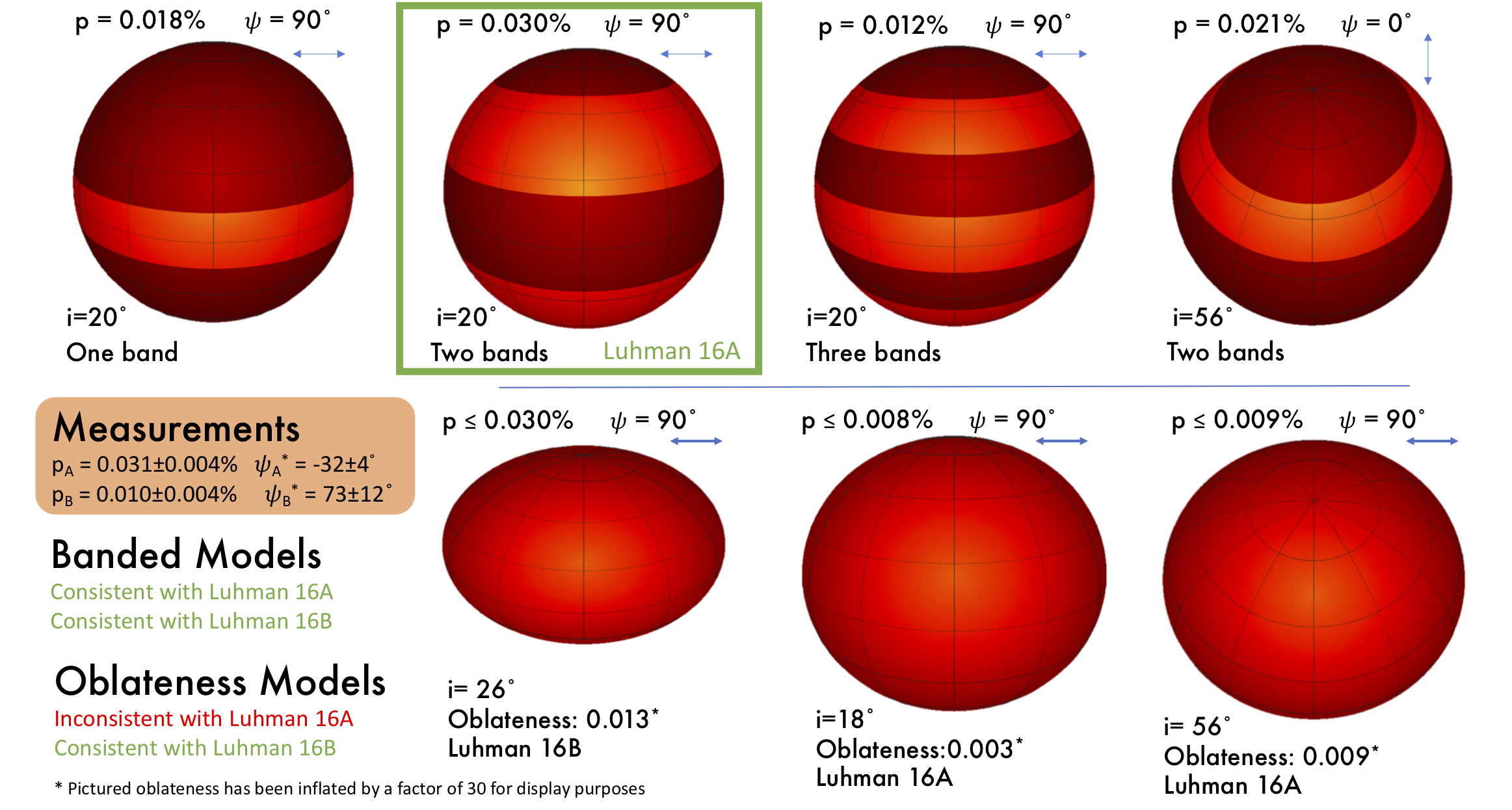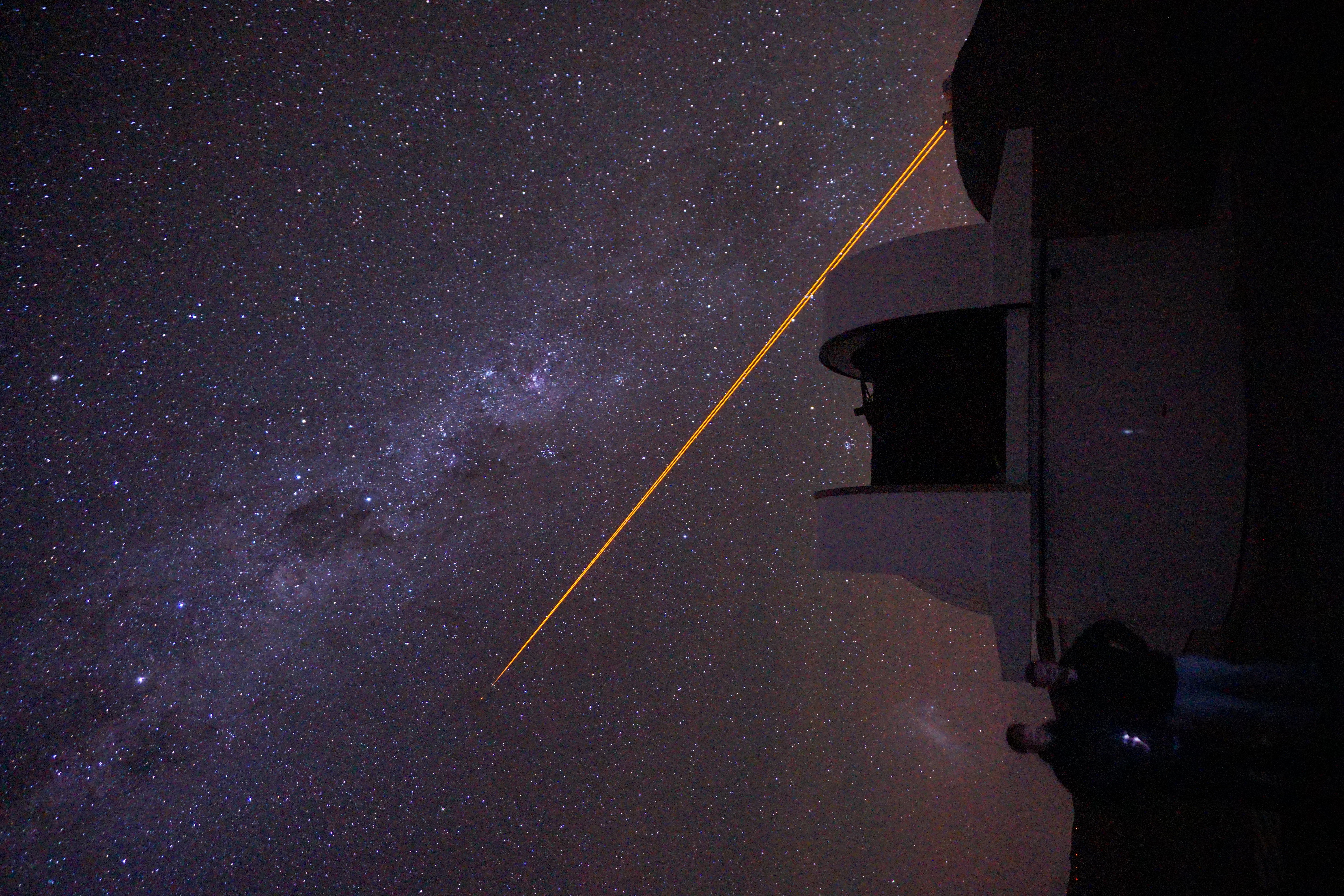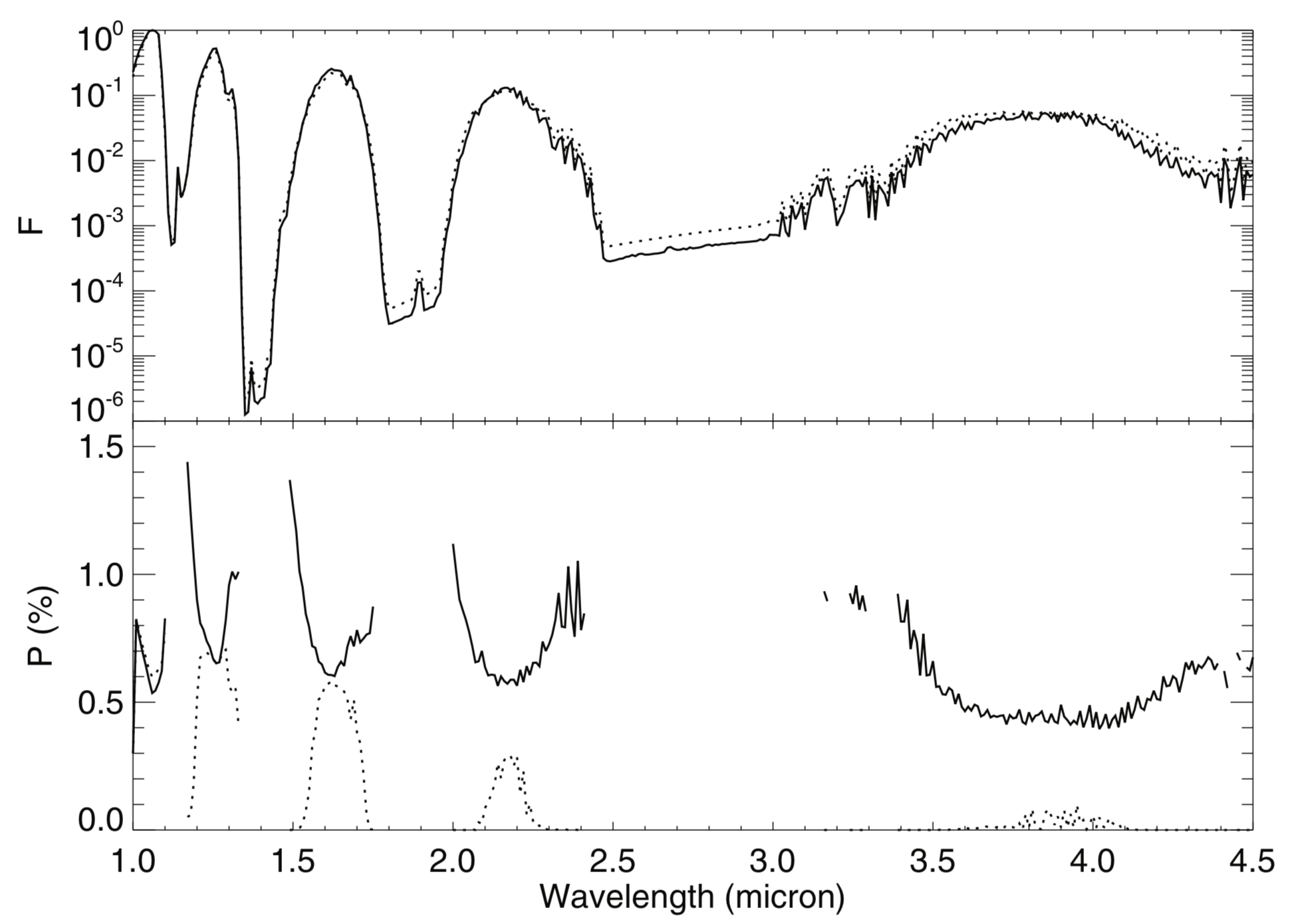Exoplanet and Brown Dwarf Atmospheres
Polarimetry has the potential to revolutionize our understanding of cloud properties in exoplanets and brown dwarfs, by providing critical constraints on cloud morphologies, heights, compositions, and particle size distributions that are unavailable through other observational methods. Brown dwarfs are considered close relatives of directly imaged exoplanets and studying their atmospheres is an established way to make progress on understanding super-Jupiter atmospheres while side-stepping the challenges associated with observing an extremely faint object (a planet) next to a bright star. I am currently focused on two projects that use polarimetry to study brown dwarf atmospheres: polarimetric observations of the Luhman 16 brown dwarf binary and the WIRC+Pol Survey.
Luhman 16
Luhman 16 is a binary brown dwarf system that is the third closest system to Earth! In 2018, I began investigating
the binary system using the polarimetry mode of the NACO instrument at VLT. We were able to make very precise measurements of the two objects and found that the
A polarization measured for the A component can only be explained by banded clouds like we see in Jupiter,
whereas the polarization measured from the B component could be due to either banded clouds and its inherent oblate shape. This result is incredibly exciting because
it represents the first time that polarimetry has been used to carry out this type of cloud morphological study,
and it opens up the door to a range of new studies using polarimetry on other objects. This work has now accepted for publication in ApJ.

A summary of the conclusions from our initial Luhman 16 study: the measured polarization for Luhman 16A can only be explained by banded clouds.
In April/May 2019, I returned to NACO with my collaborator Julien Girard to follow-up this detection and search for time-variability in the polarization signature over 4 nights. During these nights we were also able to obtain simultaneous photometric monitoring with the Speculoos (pictured below) and Trappist telescopes in order to match variations in the targets brightness with polarization variability. In this photo VLT can be seen in the top-right. We are currently processing this data.

WIRC+Pol
WIRC+Pol is a new polarization grating-based low spectral-resolution spectropolarimetry mode for the WIRC near-infrared camera at the Palomar 200-inch telescope. I am currently the project scientist for the WIRC+Pol project, an effort to use spectropolarimetry to understand the nature of the clouds in brown dwarfs. WIRC+Pol was first installed in Feb. 2017 and in 2019 I lead the installation of a half-wave plate in order to reduce our instrument systematics to the levels needed to carry out a systematic survey across the L and T brown dwarf spectral types.

The spectrum (top panel) and polarized spectrum (bottom panel) of a 10 Jupiter-Mass planet, by de Kok et al. 2011. Two models are shown: one with clouds at the top of the atmosphere, and one with clouds at a lower altitude (0.015 bar). While the spectra of the two models are nearly identical, the polarized spectra of the two models are very different. We hope to use WIRC+Pol to carry out studies to measure the polarized spectra of brown dwarfs in order to provide empirical measurements of the cloud heights. Ultimately we want to understand how these cloud heights (and other cloud properties) vary with brown dwarf and exoplanet physical properties, such as mass and temperature.
Head over to my Instrumentation section for more details on the instrument.